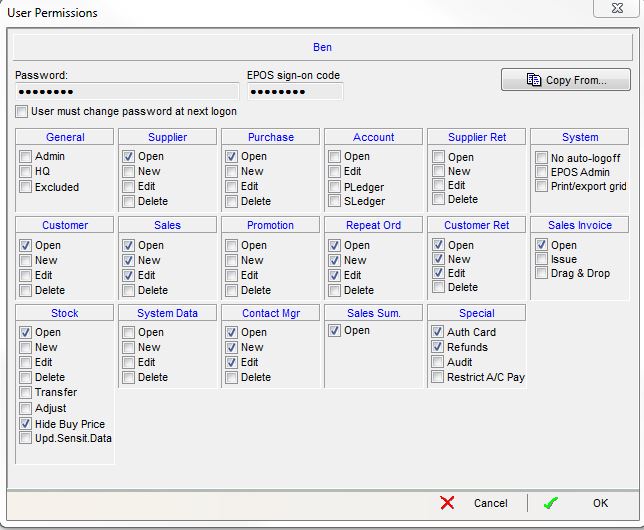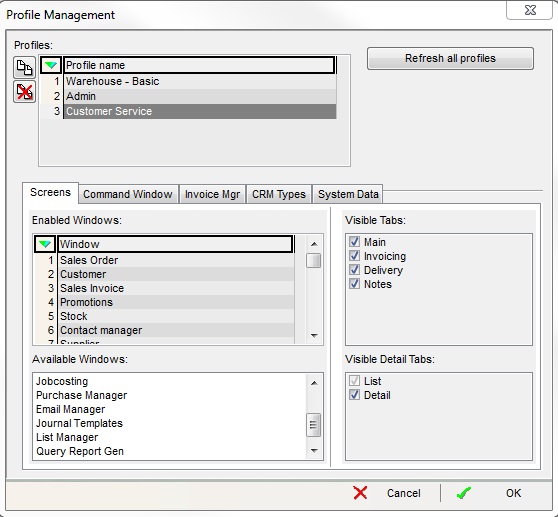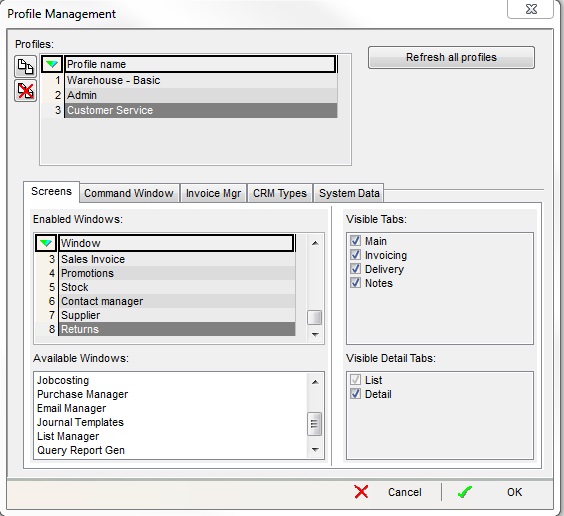How To: Create a New Customer Service User
Overview
When creating a new user with a specific role, it is necessary to define both permissions (what they can do) and a profile (what they can see). As a rule, it is best to start by setting permissions and access to the minimum levels possible for the role in question. Further permissions and access can then be added in, if and when required. Here is an exemplar of how a new Customer Service User might be created and set up. In this example, our Customer Service user has a fairly wide remit, and so has had permissions enabled to open, though not necessarily edit, a wide range of screens.
Creating New User
- Open a System Data screen.
- Double click on
[ Others | Users ]. - Press Alt+E or click
 to enter edit mode.
to enter edit mode. - Press F3 or click
 to add a new item.
to add a new item. - Enter the details of the new user (see Users for a description of the grid columns).
- Press Ctrl+S or click
 to save the new user.
to save the new user.
Setting User Permissions
- Select User Permissions from the right-click context menu and set these as required.
- Below is a screenshot of typical settings that might be used for a Customer Service User - these may need to be adjusted to suit specific business requirements, for example:
- It may be necessary to enable permission to open the promotions screen, if the operative is likely to be answering queries on promotions
- In a more limited Customer Service role, the ability to create new sales may also be disabled
- It may be decided to allow a Customer Service user to edit customer details

In this example, a Customer Service User might need to be able to authorise credit cards and process refunds, so these permissions have been enabled.
Creating User Profiles
- Right click on the grid and select 'Define Profiles'.
- Select 'Yes' to the information dialog displayed.
- Click on
 to add a blank profile to the bottom of the Profiles grid.
to add a blank profile to the bottom of the Profiles grid. - In the Profile Management dialog add a name for the profile and select it.
- In the Screens' tab, drag and drop screens required for the profile from the Available Windows grid into the Enabled Windows grid.
- Untick the Visible Tabs and Visible Detail Tabs that are not required for the profile for every enabled screen.
- In the Command Window tab, check the Command Window options that are required for the profile.
- In the Invoice Mgr tab, check the stages that are required for the profile.
- In the CRM Types Tab check all the CRM Types that will be blocked for this profile.
- Click on 'OK'.
Below are screenshots of typical settings that might be used for a Customer Service User - these may need to be adjusted to suit specific business requirements, for example it might be necessary for a Customer Service user to be given access to the Email Manager Screen, which we have not done here.


